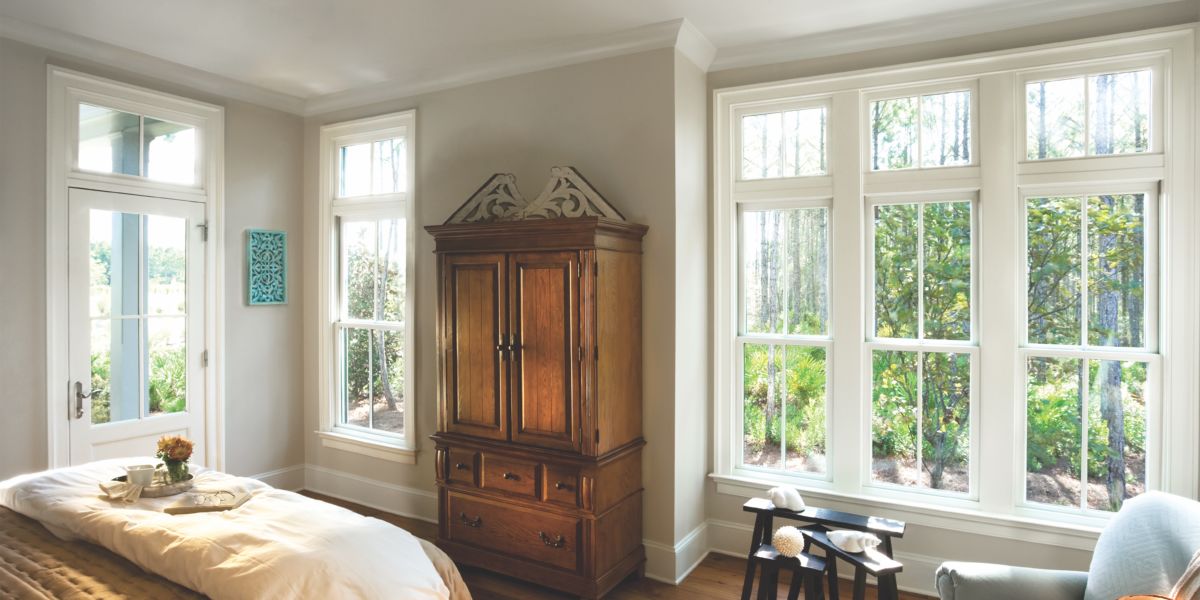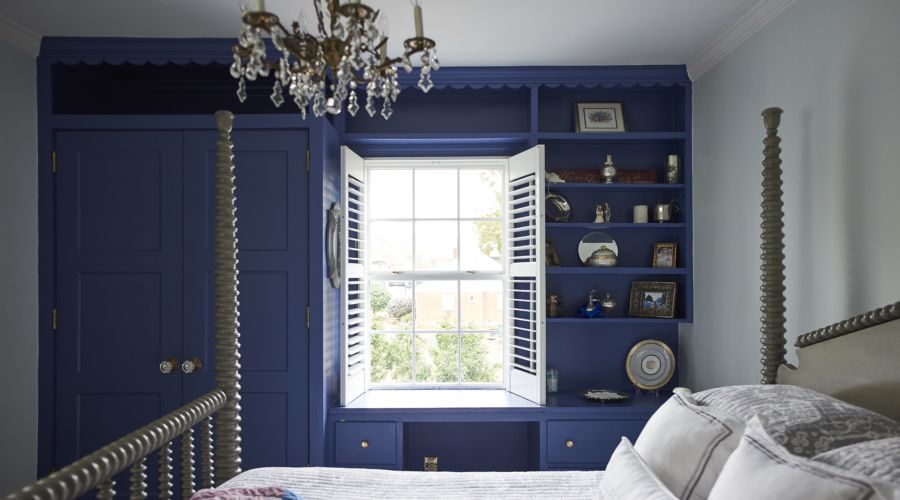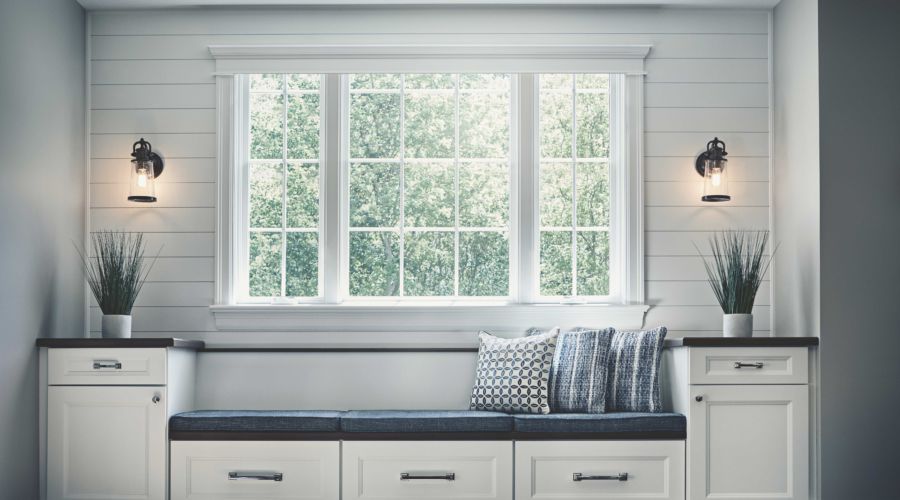
Are Your Old Windows Making Your House Hotter? It Might Be Time for an Upgrade.
Windows let in light, blur the barrier between outdoors and in, and can help us regulate indoor temperatures—when they work. Here’s how to whip your old ones into shape, and know when you need an upgrade.

At Sunset, we love a great old house. We also love saving energy. And sometimes, well, those two interests aren’t aligned.
Most stories about efficient houses and energy savings point to new technology and construction. But we’re here to remind you that it’s possible to make some simple changes to keep cool air in during the summer and out in the winter—even in a decades-old home.
About 30% of a home’s heating energy is lost through windows, according to the U.S. Department of Energy. In warmer months, three-quarters of the sunlight that shines through standard, double-pane windows enters the house to become heat. Adding window treatments, fixing broken and leaky windows, and choosing new, Low-E glass window panes designed to reduce heat gain can keep you comfortable with less wasted power.

Courtesy of JELD-WEN
Invest in Operable Window Covers—and Use Them
Curtains, blinds, and shutters can let in light and heat when you want it, and shut it out when you don’t. In the West, where the primary concern is keeping a house cool during intense heat, roller and roman shades and blinds might be enough to block sunlight and keep your rooms cooler. Close shades on the windows with western and southern exposure in the afternoon, when the sun is most intense. During summer days, you should close draperies on windows receiving direct sunlight to prevent heat gain all day. Curtains with a tight-weave fabric, a privacy blocker, or light-filtering lining can reduce heat gains by 33%. Adding a cornice at the top of a curtain can block even more. Letting curtains hang in the same position all day every day is a wasted opportunity to regulate the temperature of your home.
Consider an Awning
On the right kind of house, a cute awning (stripes are a bonus) can reduce summer heat gain by up to 65% on south-facing windows and 77% on west-facing windows. Shade-single windows, or extend a shade to cover the side of a house that gets intense, direct summer light. A metal frame wrapped in fabric (traditionally, it’s been canvas, but high-tech outdoor acrylic fabric is more durable) is the sturdiest option. Professional awning makers know this, but awnings require ventilation to keep hot air from getting trapped around a window. Vents and grommets can solve this air flow problem.
Fix Broken, Leaky Windows
If you notice air moving around your windows when they’re closed—or you can slip a sheet of paper through any openings or cracks—they may need to be sealed with weather stripping. Check out Sunset’s handy guide to weather-proofing here.
Our sympathy goes out to anyone who wrestles regularly with ancient sash windows, which have one or more movable panels, or “sashes,” which slide open and closed. The window panels are balanced by weights and counter-weights hidden inside the frame, and connected by a rope or cord on a simple pulley system. Take a look at Sunset’s pointers for opening windows that won’t budge. Once they’re pried free, you may notice that they don’t stay open, and if you have a sash window, you may need to repair a broken cord. That requires disassembling parts of the window frame. If you’re struggling with older windows, and don’t have the budget, or the interest, to replace them completely with newer more efficient models, the window experts at JELD-WEN have a solution: Replace the guts to get them to function properly.
The JELD-WEN Siteline Pocket and Sash Pack windows provide the components needed to repair the interior workings of traditional sashed windows, which were popular in the early part of the 20th century. The new series includes double-hung pocket, casement pocket, and sash pack windows and can be used to replace any comparable wood window product.

Courtesy of JELD-WEN
Consult Window Experts When It’s Time to Replace Them
Ultimately, if you’re regularly battling an old window to release it from layers of aging paint, or navigating around broken parts, it may be damaged beyond repair. The good news is that replacing ancient windows can be a relatively quick exterior facelift and can help seal the “envelope” of your home—the seal that keeps power in and reduces waste. And it’s possible to make a home more comfortable and maintain the classic looks of a vintage house.
If you decide to replace them, consider coated Low-E glass, which is so energy-efficient that it’s used in LEED-certified (which stands for “Leadership in Energy and Environmental Design”) homes. To know which Low-E is best suited for a project, it’s important to understand just what Low-E is, and how it works. Low-E, meaning “Low-Emissivity,” is an extremely thin layer, or several layers, of metallic particles applied to the glass which, in simple terms, allows the glass to act like a sieve. Long heat wavelengths are filtered out, while short wavelengths (the visible light spectrum) are allowed to pass through.
Here’s the coolest part: It’s possible to get very specific in designing glass that will meet your exact needs. Do you need greater protection for fading wood floors and upholstery? There’s a Low-E for that. Do you want a lot of visible light but no heat? There’s a Low-E for that, too. Adding argon gas to the captive air space between glass panes will improve insulating value. Adding various tinting agents to the glass itself will allow for even further refinement of the glass’ performance.
The frame of the window is just as crucial to energy savings as the glass. Wood windows from JELD-WEN, made with AuraLast® pine, deliver the beauty of natural wood interiors without the worry of rot. They’re built ready for stain, clear coat, or paint to get the exact look you want, and they’re easy to care for. Clad-wood windows feature beautiful wood inside the home and protective, low-maintenance metal cladding outside to provide extra protection against the elements. The baked-on finish is durable, easy to care for, and available in a variety of colors. They’ll keep heat outside when the temperature rises, and inside when it drops.
And don’t forget to open them up to let in fresh air during all of the beautiful days in between.
